Home>Home Maintenance>What Kind Of Things Scare Buyer Away During Home Inspection


Home Maintenance
What Kind Of Things Scare Buyer Away During Home Inspection
Modified: March 6, 2024
Avoid scaring buyers away during a home inspection by prioritizing proper home maintenance. Learn what things to watch out for to ensure a successful sale.
(Many of the links in this article redirect to a specific reviewed product. Your purchase of these products through affiliate links helps to generate commission for Storables.com, at no extra cost. Learn more)
Introduction
When it comes to selling your home, one of the crucial steps is the home inspection. This is the process where a certified professional evaluates the condition of your property to identify any existing or potential issues. A thorough and successful home inspection can provide potential buyers with peace of mind and confidence in their purchase.
However, there are certain things that can scare buyers away during a home inspection. These are the red flags that can raise concerns and make potential buyers rethink their decision. It is essential to be aware of these issues and take proactive measures to address them before putting your home on the market. In this article, we will discuss some common factors that can scare buyers away during a home inspection, and how you can avoid them.
Key Takeaways:
- Regular home maintenance and addressing minor repairs can make your home more attractive to buyers and increase their confidence in the property’s overall condition.
- Addressing structural, water damage, pest infestation, and electrical/plumbing issues proactively can alleviate buyer concerns and improve the marketability of your home.
Lack of Maintenance
One of the most significant issues that can scare buyers away during a home inspection is a lack of maintenance. A well-maintained property is a strong indication of its overall condition and longevity. When buyers see signs of neglect or deferred maintenance, it raises concerns about the potential for more significant problems lurking beneath the surface.
During a home inspection, the inspector will thoroughly examine various elements of the property, including the exterior, interior, and mechanical systems. They will scrutinize things like the condition of the roof, siding, windows, and landscaping. They will also check for signs of damage or wear and tear on the walls, floors, and fixtures.
If the inspector discovers issues such as peeling paint, cracked windows, leaking faucets, or overgrown vegetation, it can indicate a lack of regular maintenance. Buyers may perceive this as a red flag, questioning whether there may be hidden problems or a need for costly repairs in the future.
To prevent this from scaring away potential buyers, make sure to stay on top of regular home maintenance. Keep the property clean and well-manicured, both inside and out. Regularly inspect and address any issues promptly, such as fixing leaky faucets, patching cracks in walls, and replacing damaged siding or windows.
It’s also a good idea to keep a record of your maintenance activities and any repairs or upgrades you’ve made to the property. This can help reassure buyers that you have been proactive in taking care of the home and provide them with peace of mind.
By demonstrating that you have maintained your home properly, you can alleviate buyer concerns and increase their confidence in the property’s overall condition.
Structural Issues
Structural issues are a significant concern during a home inspection and can be a major deterrent for potential buyers. These issues involve the structural integrity of the property, including the foundation, walls, and framing. If there are visible signs of structural problems, such as cracks in the foundation or sagging floors, it can indicate serious underlying issues that may require costly repairs.
During a home inspection, the inspector will carefully examine the structure of the home, looking for any signs of structural damage or instability. They may use tools like a level to check if the floors and walls are straight and plumb. They may also look for cracks or bulging in the walls, which can be indicators of foundation issues.
If significant structural issues are discovered, it can raise concerns about the safety and stability of the home. Buyers may be hesitant to invest in a property with a compromised foundation or structural damage that could potentially worsen over time.
To avoid scaring away potential buyers due to structural issues, it is important to address any known problems before putting your home on the market. Consult with a professional structural engineer or contractor to assess the extent of the damage and determine the appropriate repairs.
Repairing structural issues can be a complex and costly process, but it is essential for both the safety of the occupants and the marketability of the property. By taking the necessary steps to address these issues, you can provide potential buyers with confidence in the structural integrity of the home.
It’s important to note that even if you have already made repairs, it’s crucial to disclose any past structural issues and the repairs you have undertaken. Transparency is key in building trust with potential buyers.
Remember, buyers want to invest in a home that is safe and structurally sound. By addressing and resolving any structural issues, you can significantly improve the marketability of your home and attract more confident buyers.
Water Damage
Water damage is a serious concern for homebuyers as it can lead to a host of issues such as mold, rot, and structural damage. During a home inspection, the inspector will thoroughly evaluate areas susceptible to water damage, including the roof, windows, plumbing, and foundation.
If there are visible signs of water damage, such as water stains on the ceilings or walls, warped or discolored flooring, or musty odors, it can raise red flags for potential buyers. Water damage not only indicates a current problem but also suggests the possibility of ongoing leaks and moisture-related issues.
To prevent scaring away potential buyers due to water damage, it is crucial to identify and address the source of the issue. Hire a professional to inspect and repair any roof leaks, faulty plumbing, or improper drainage that may be causing water intrusion into the home.
It’s also important to remediate any visible signs of water damage. This may involve replacing damaged drywall, fixing or replacing flooring, or treating mold and mildew growth. Taking proactive steps to rectify water damage demonstrates your commitment to maintaining a safe and healthy living environment for potential buyers.
Additionally, be transparent about any past incidents of water damage and the steps you have taken to mitigate the issue. Providing documentation of repairs can help alleviate concerns and build trust with potential buyers.
Prevention is key when it comes to water damage. Regularly inspect your home for signs of leaks, maintain proper drainage, and address any plumbing issues promptly. By keeping your property free from water-related problems, you can instill confidence in buyers and minimize the risk of scaring them away during the home inspection process.
Pest Infestation
Pest infestation is a major turn-off for potential homebuyers during a home inspection. Pests such as termites, rodents, and insects can cause significant damage to a property and pose health risks to its occupants. Therefore, it’s essential to address any pest issues before listing your home for sale.
During a home inspection, the inspector will carefully look for signs of pest infestation, such as droppings, nesting materials, chewed wires or wood, and insect activity. These indicators can scare away buyers as they raise concerns about the extent of the infestation and the potential damage it may have already caused.
If you suspect or have evidence of a pest problem, it’s crucial to hire a professional pest control company to conduct a thorough inspection and treatment, if necessary. They can identify the type of pests present and implement appropriate measures to eradicate them.
It’s also essential to address any conditions that may attract pests to your property. This includes sealing entry points, repairing any holes or gaps in the structure, and keeping the property clean and free of food sources that may attract pests.
During the home inspection, ensure that any pest control measures and treatments you have taken are properly documented. This documentation will provide reassurance to potential buyers that you have taken appropriate action to resolve the issue.
Remember, buyers want a home that is free from pests and the potential damages they can cause. By addressing any pest infestation and providing documentation of the measures you’ve taken, you can instill confidence in potential buyers and increase the marketability of your home.
Electrical Problems
Electrical problems are a significant concern during a home inspection that can scare buyers away. Faulty electrical systems can pose safety hazards and lead to potential fire risks. Therefore, it’s crucial to ensure that the electrical system in your home is in good working order before putting it on the market.
During a home inspection, the inspector will thoroughly evaluate the electrical system, checking the wiring, outlets, switches, and the functionality of important electrical components, such as the circuit breaker panel. They will also look for any visible signs of electrical issues, such as flickering lights, exposed wiring, or outdated electrical fixtures.
If electrical problems are identified during the inspection, potential buyers may hesitate to move forward with the purchase. Common electrical issues that can scare buyers away include outdated or unsafe wiring, overloaded circuits, inadequate grounding, and improperly installed electrical fixtures.
To mitigate concerns about electrical problems, it’s important to address any issues identified during the inspection. Hire a licensed electrician to conduct a thorough evaluation of your electrical system and make necessary repairs or upgrades.
This may involve replacing outdated wiring, ensuring proper grounding, and installing additional outlets or circuit breakers to accommodate the electrical needs of modern appliances and technology. It is crucial to comply with local electrical codes to ensure the safety and functionality of the electrical system.
Additionally, consider getting an electrical inspection done before listing your home for sale. This will help you identify any potential problems and address them proactively.
Providing documentation of any electrical repairs or upgrades can help alleviate buyer concerns and instill confidence in the safety and reliability of your home’s electrical system.
Remember, electrical problems are not only a potential safety hazard but can also be a deal-breaker for potential buyers. By addressing and resolving any electrical issues, you can increase the appeal and marketability of your home during the inspection process.
Plumbing Issues
Plumbing issues are a common concern during a home inspection and can greatly impact a buyer’s decision. Problems with plumbing systems can lead to water damage, leaks, poor water pressure, and mold growth. It’s important to address any plumbing issues before putting your home on the market to avoid scaring away potential buyers.
During a home inspection, the inspector will examine the plumbing system, including the pipes, fixtures, drains, and water supply. They will check for leaks, signs of water damage, and assess the overall functionality of the plumbing system.
If plumbing issues are detected during the inspection, it can raise concerns about the condition of the property’s plumbing and the potential for costly repairs. Common plumbing issues that can scare buyers away include leaking pipes, clogged drains, low water pressure, and outdated or faulty fixtures.
To address plumbing issues, it’s recommended to hire a licensed plumber to conduct a thorough inspection of your plumbing system. They will be able to identify any problems and provide guidance on the necessary repairs or upgrades.
Repairing plumbing issues may involve fixing leaks, unclogging drains, replacing worn-out fixtures, or upgrading the plumbing system to improve water pressure and efficiency. It’s important to ensure that any repairs or upgrades are done by a professional to ensure the work is done correctly and up to code.
Providing documentation of any plumbing repairs or upgrades will help alleviate buyer concerns and demonstrate that you have taken the necessary steps to address plumbing issues. This can build trust and increase the appeal of your home during the inspection process.
Prevention is key when it comes to plumbing issues. Regularly inspect your plumbing system, address any leaks or drainage problems promptly, and avoid improper use of plumbing fixtures to minimize the risk of plumbing issues occurring in the future.
By ensuring your plumbing system is in good working order, you can improve the marketability of your home and provide potential buyers with confidence in the reliability and functionality of the plumbing.
Mold and Mildew
Mold and mildew are common issues that can scare buyers away during a home inspection. These fungal growths not only indicate a moisture problem but can also cause health issues and damage to the property. It’s important to address any mold and mildew concerns before listing your home for sale.
During a home inspection, the inspector will carefully examine areas prone to mold and mildew growth, such as bathrooms, basements, and crawl spaces. They will look for visible signs of mold, such as discoloration, musty odors, or the presence of mold spores. Additionally, they may use tools like moisture meters to identify areas of excess moisture that can contribute to mold growth.
If mold or mildew is discovered during the inspection, it can raise concerns for potential buyers. They may associate mold with poor indoor air quality, allergies, and potential structural damage. Buyers may fear that the presence of mold and mildew is indicative of underlying moisture issues.
To address mold and mildew concerns, it’s important to identify and remedy the source of moisture. This may involve fixing plumbing leaks or inadequate ventilation, improving drainage, or installing dehumidifiers in areas prone to excess moisture.
Once the moisture issue has been resolved, it’s crucial to properly remediate the mold by hiring professionals experienced in mold removal and remediation. They will ensure that the affected areas are thoroughly cleaned and that any damaged materials are properly treated or replaced.
Providing documentation of mold remediation and any necessary repairs can help alleviate buyer concerns. It demonstrates that you have taken appropriate measures to address the issue and provide a safe and healthy living environment.
Regular maintenance and preventive measures are also crucial in preventing mold and mildew growth. Regularly inspect your home for signs of moisture and address any issues promptly. Keep the property well-ventilated, control humidity levels, and promptly fix any leaks or water intrusion.
By taking proactive steps to address and prevent mold and mildew, you can increase the appeal and marketability of your home. Potential buyers will feel more confident in the condition of the property and the measures taken to ensure a mold-free environment.
Make sure to address any visible issues before the home inspection, such as leaky faucets, peeling paint, or damaged flooring. Buyers can be scared away by the thought of potential costly repairs.
HVAC System Malfunctions
HVAC (Heating, Ventilation, and Air Conditioning) system malfunctions can be a significant concern for potential homebuyers during a home inspection. A properly functioning HVAC system is essential for maintaining comfort, energy efficiency, and indoor air quality in a home. Any issues with the HVAC system can raise red flags and scare away buyers.
During a home inspection, the inspector will evaluate the HVAC system, including the furnace, air conditioner, ventilation, and ductwork. They will check for any signs of malfunctions, such as uneven heating or cooling, poor air flow, unusual noises, or inefficient operation.
If HVAC system malfunctions are discovered during the inspection, it can raise concerns about expensive repairs or replacement costs. Buyers may be wary of investing in a property with an unreliable heating and cooling system that may require immediate attention.
To address HVAC system malfunctions, it’s essential to have the system professionally inspected and serviced before listing your home for sale. A licensed HVAC technician can identify any issues and perform necessary repairs or maintenance tasks.
Common HVAC system issues that can scare away buyers include faulty thermostats, worn-out components, dirty filters, leaky ducts, or inadequate insulation. Taking care of these issues will help ensure that your HVAC system is in good working condition, providing optimal comfort and energy efficiency.
It’s also important to provide documentation of regular HVAC system maintenance and any repairs or replacements that have been done. This can give potential buyers peace of mind and confidence in the functionality of the system.
In addition to addressing existing HVAC system malfunctions, consider showcasing any energy-efficient features or upgrades you have made to the system. This could include programmable thermostats, energy-efficient HVAC models, or improved insulation. These features can be attractive to buyers looking for energy-saving options.
Regularly maintaining your HVAC system and addressing any malfunctions will not only make your home more appealing to potential buyers but will also contribute to the long-term efficiency and longevity of the system.
By ensuring your HVAC system is in good working order, you can alleviate buyer concerns and increase the marketability of your home during the inspection process.
Roofing Problems
Roofing problems are a significant concern during a home inspection and can scare away potential buyers. The roof is one of the most critical components of a home, protecting it from the elements. Any issues with the roof can lead to water damage, structural problems, and costly repairs. It’s essential to address roofing problems before putting your home on the market.
During a home inspection, the inspector will carefully evaluate the condition of the roof, looking for signs of damage, leaks, or wear and tear. They will check for missing or damaged shingles, sagging areas, signs of water infiltration, and the overall integrity of the roofing materials.
If roofing problems are identified during the inspection, it can raise concerns for potential buyers. They may worry about the cost and potential risks associated with repairing or replacing a damaged roof. A damaged or deteriorating roof can also impact the insurability of the property.
To address roofing problems, it’s important to have a professional roofer assess the condition of your roof and make necessary repairs or replacements. This may involve replacing missing or damaged shingles, fixing leaks or weak spots, repairing flashing, or even replacing the entire roof if it’s beyond repair.
Providing documentation of any roof repairs or replacements can help alleviate buyer concerns and demonstrate your proactive approach in maintaining the home. This documentation will also give potential buyers confidence in the long-term durability and reliability of the roof.
Regular maintenance is key in preventing roofing problems. Inspect your roof regularly, especially after severe weather events, and address any issues promptly to avoid further damage or leaks. Keep gutters clean to prevent water buildup, which can contribute to roof damage.
Additionally, consider highlighting any recent roof upgrades or energy-efficient features you have installed. This can add value to your home and attract buyers looking for energy-saving options.
By addressing roofing problems and providing documentation of any repairs or upgrades, you can ease buyer concerns and increase the marketability of your home during the inspection process. A well-maintained roof provides peace of mind to potential buyers and adds value to your property.
Environmental Hazards
Environmental hazards are a serious concern for potential homebuyers during a home inspection. These hazards include issues like asbestos, lead-based paint, radon gas, and other toxic substances. Identifying and addressing these hazards is crucial to avoid scaring away buyers and ensuring the safety of the property.
During a home inspection, the inspector will check for the presence of environmental hazards that can pose health risks. This may involve testing for radon gas, inspecting for asbestos-containing materials, checking for lead-based paint in older homes, and evaluating the presence of other toxic substances.
If environmental hazards are discovered during the inspection, it can cause alarm for potential buyers. They may worry about the health implications, the cost of remediation, and the potential legal and liability issues associated with these hazards.
To address environmental hazards, it’s important to hire professionals who specialize in each specific concern. For instance, a certified radon professional can conduct a radon test and recommend remediation measures if necessary. Similarly, an asbestos abatement contractor can safely remove and dispose of asbestos-containing materials.
If your home contains lead-based paint, it’s important to comply with local regulations regarding disclosure and mitigation. In some cases, encapsulating or removing the lead-based paint may be necessary.
Providing documentation of any environmental hazard testing, inspections, and remediation can help alleviate buyer concerns. It demonstrates that you have taken the necessary steps to identify and address potential hazards, ensuring a safe living environment for the future occupants.
It’s important to be transparent about any known environmental hazards and provide information to buyers about the steps you’ve taken to mitigate these concerns. Buyers appreciate honesty and clear communication in these matters.
While environmental hazards can create challenges, handling these issues responsibly can protect the health and well-being of potential buyers and increase the overall marketability of your home.
Outdated or Unsafe Features
Outdated or unsafe features in a home can be a major concern for potential buyers during a home inspection. These features, whether they are outdated electrical systems, old appliances, or unsafe structural elements, can raise red flags and scare away buyers. It is crucial to address and update these features to improve the marketability and safety of your home.
During a home inspection, the inspector will thoroughly evaluate various aspects of the property, including the electrical system, appliances, structural elements, and other features. They will look for outdated or unsafe features that may pose a risk to the occupants or require costly repairs.
Outdated features, such as knob-and-tube wiring or ancient appliances, may not only be inefficient but also potentially dangerous. They can pose fire hazards or lack the modern conveniences that buyers expect in a home.
If unsafe features or outdated elements are discovered during the inspection, it can give buyers pause. They may be hesitant to invest in a property that requires significant updates or poses safety risks.
To address these concerns, consider updating any outdated or unsafe features in your home. This may involve replacing old electrical systems, upgrading appliances, improving structural elements, or making other necessary renovations.
Outdated and unsafe features should not be overlooked, as they can significantly impact the value of your home. Taking the time and effort to modernize and ensure the safety of these elements can make your home more appealing to buyers.
It’s essential to work with professionals such as electricians, contractors, or designers, who can provide guidance and expertise in updating these features. They can help ensure that any updates are done correctly and up to code.
When showcasing your home to potential buyers, highlight the modernized features and the steps you have taken to improve safety. Providing documentation of any renovations, upgrades, or safety measures can give buyers peace of mind and confidence in the condition of your home.
By addressing outdated or unsafe features, you demonstrate your commitment to creating a safe and updated living environment, making your home more attractive to potential buyers.
Inadequate Insulation
Inadequate insulation in a home can be a significant concern for potential buyers during a home inspection. Proper insulation plays a crucial role in maintaining comfort and energy efficiency. If a home lacks sufficient insulation, it can lead to increased energy costs, uncomfortable living conditions, and potential moisture-related issues. It’s important to address inadequate insulation before putting your home on the market.
During a home inspection, the inspector will assess the insulation levels in various areas, including the walls, basement, attic, and crawl spaces. They will check if the insulation meets the current building code requirements and evaluate its effectiveness in providing thermal protection.
If inadequate insulation is discovered during the inspection, it can raise concerns for potential buyers. They may worry about energy efficiency, increased heating and cooling costs, and overall comfort in the home.
To address inadequate insulation, consider hiring a professional insulation contractor to evaluate your current insulation levels and make necessary improvements. This may involve adding insulation to areas with low levels, replacing damaged or deteriorated insulation, or upgrading to more efficient insulation materials.
Proper insulation not only improves energy efficiency and comfort in the home but also helps regulate temperature and reduces the risk of condensation and moisture-related problems, such as mold and rot.
Document any insulation improvements or upgrades that you make, as this can instill confidence in potential buyers. You can provide them with documentation that highlights the type and R-value of the insulation used, showcasing your efforts to improve the energy efficiency and thermal performance of your home.
Inadequate insulation is not only a concern during the home inspection but also a long-term consideration for buyers. Demonstrating that you have addressed this issue allows potential buyers to envision a home that is comfortable, energy-efficient, and cost-effective to maintain.
By addressing inadequate insulation and providing documentation of any insulation improvements, you can enhance the marketability of your home and attract buyers who value energy efficiency and home comfort.
Poor Drainage
Poor drainage is a significant concern during a home inspection that can scare away potential buyers. Improper water drainage around a property can lead to a range of issues, including water damage, soil erosion, foundation problems, and the proliferation of pests. It is essential to address any drainage problems before putting your home on the market.
During a home inspection, the inspector will assess the grading and drainage around the property. They will look for signs of water accumulation, pooling, or excessive moisture in areas such as the yard, basement, or crawl spaces.
If poor drainage is discovered during the inspection, it can raise concerns for potential buyers. They may worry about the likelihood of water seepage into the home, which can lead to property damage and mold growth. Additionally, buyers might be concerned about the potential for costly repairs or ongoing maintenance to address drainage issues.
To address poor drainage, it’s crucial to identify the underlying causes and implement appropriate solutions. This may involve grading the yard to ensure proper slope away from the foundation, installing or repairing gutters and downspouts, adding French drains or catch basins, or creating landscaping features that redirect water flow.
Consulting with a drainage expert or professional landscaper can help you determine the most effective solutions for your specific drainage issues. Their expertise can ensure that the drainage improvements will effectively divert water away from the property, mitigating potential water-related problems.
Document any drainage improvements or repairs made, as buyers will appreciate knowing that you have taken steps to address poor drainage. This documentation will provide them with confidence in the integrity of the property and the measures taken to protect it from water-related issues.
It’s also important to maintain proper drainage systems regularly. Keep gutters clean and free from debris, ensure downspouts are properly connected and directing water away from the foundation, and monitor the grading of your yard to prevent soil erosion and water pooling.
By addressing poor drainage and providing documentation of any improvements, you can alleviate buyer concerns, protect your property from water damage, and increase the marketability of your home during the inspection process.
Foundation Concerns
Foundation concerns are one of the most significant issues that can scare away potential buyers during a home inspection. The foundation is the base of a home’s structure, and any problems in this area can have serious implications for the property’s stability and value. It’s crucial to address any foundation concerns before listing your home for sale.
During a home inspection, the inspector will carefully examine the foundation, looking for signs of settlement, cracks, poor drainage, or other structural issues. They may use specialized tools and techniques to assess the condition of the foundation.
If foundation concerns are identified during the inspection, it can cause alarm for potential buyers. They may worry about the structural integrity of the home, future costs of repairs, and potential safety hazards.
To address foundation concerns, it’s essential to consult with a professional structural engineer or foundation contractor. They will be able to assess the extent of the issue and recommend the appropriate repairs or remedies.
Foundation repairs can vary depending on the specific problem, ranging from minor repairs such as crack injections to more significant interventions like underpinning or foundation replacement. It’s crucial to have the repairs done by qualified professionals who have expertise in foundation work.
Document any foundation repairs or remedies that have been implemented, as this will provide reassurance to potential buyers. It demonstrates that you have taken the necessary steps to address the foundation concerns and ensure the stability of your home.
It’s important to note that disclosing foundation issues and the repairs undertaken is essential for maintaining transparency with potential buyers. Failure to disclose such issues can lead to legal consequences and further complicate the selling process.
Regular maintenance and preventive measures are key to minimizing foundation concerns. Monitor for signs of foundation movement, such as new cracks or doors and windows that no longer open or close properly. Address any drainage issues promptly to prevent water from pooling around the foundation.
By addressing foundation concerns and providing documentation of any repairs or professional assessments, you can instill confidence in potential buyers and increase the marketability of your home during the inspection process.
Conclusion
The home inspection process is a critical step in selling a home, as it allows potential buyers to assess the condition, safety, and functionality of the property. Buyers are often scared away by certain issues that may arise during the inspection. By addressing these concerns proactively, you can increase the marketability and attractiveness of your home to potential buyers.
Lack of maintenance can be a significant red flag for buyers. Regular home maintenance, including addressing minor repairs and keeping the property clean and well-maintained, is essential in creating a favorable impression.
Structural issues, such as foundation problems, can raise serious concerns about the overall integrity and stability of the home. Addressing these issues promptly with professional guidance will help provide assurance to buyers.
Water damage and mold growth can indicate underlying issues such as leaks or moisture problems. It is important to identify and remediate the source of water damage and address any mold growth to reassure potential buyers and ensure a safe living environment.
Pest infestations can also be a deal-breaker for buyers. Hiring professionals to address any pest issues and maintaining a pest-free home is crucial to avoid scaring away potential buyers.
Electrical and plumbing problems can pose safety hazards and raise concerns about the functionality of the home. Consulting with licensed professionals to address and repair any electrical or plumbing issues is vital in providing peace of mind to potential buyers.
Roofing problems and environmental hazards, such as asbestos or lead-based paint, can significantly impact a buyer’s decision. Addressing these issues and providing documentation of repairs or professional assessments is key in building buyer confidence.
Outdated or unsafe features should be updated to meet modern standards and provide a safe living environment. Transparency and documentation of any renovations or upgrades are essential in attracting buyers.
Inadequate insulation and poor drainage can contribute to energy inefficiencies and potential damage to the property. Addressing these issues and highlighting any improvements will make your home more appealing to buyers.
By addressing these common issues and demonstrating that you have taken the necessary steps to maintain and improve your home, you can enhance buyer confidence, minimize potential concerns, and increase the marketability of your home during the home inspection process.
Remember, a well-maintained and problem-free home is more likely to attract confident buyers and result in a successful sale. Taking proactive measures to address these concerns will not only increase the marketability of your home but also ensure a smoother transaction and a positive experience for both buyers and sellers.
Frequently Asked Questions about What Kind Of Things Scare Buyer Away During Home Inspection
Was this page helpful?
At Storables.com, we guarantee accurate and reliable information. Our content, validated by Expert Board Contributors, is crafted following stringent Editorial Policies. We're committed to providing you with well-researched, expert-backed insights for all your informational needs.
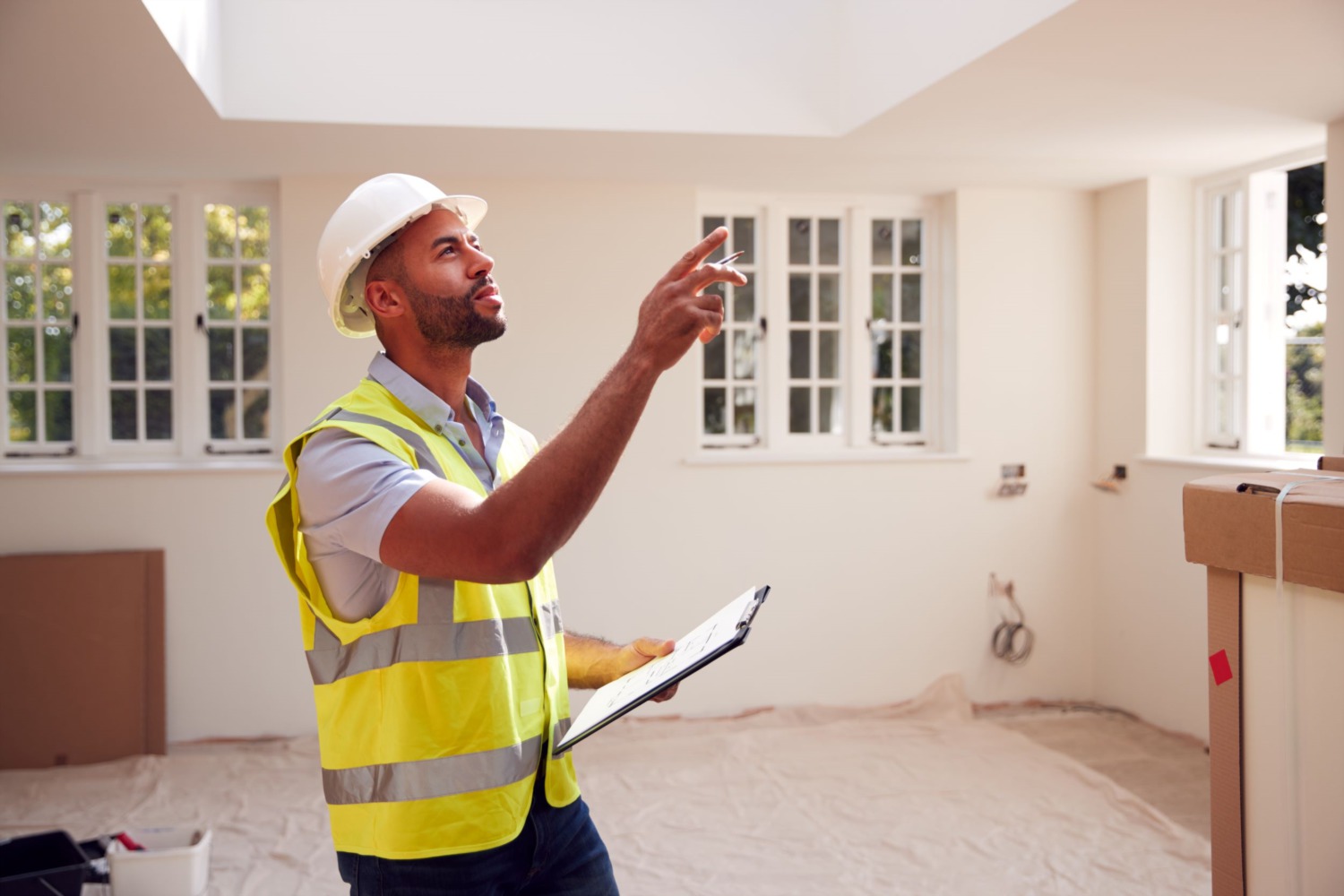


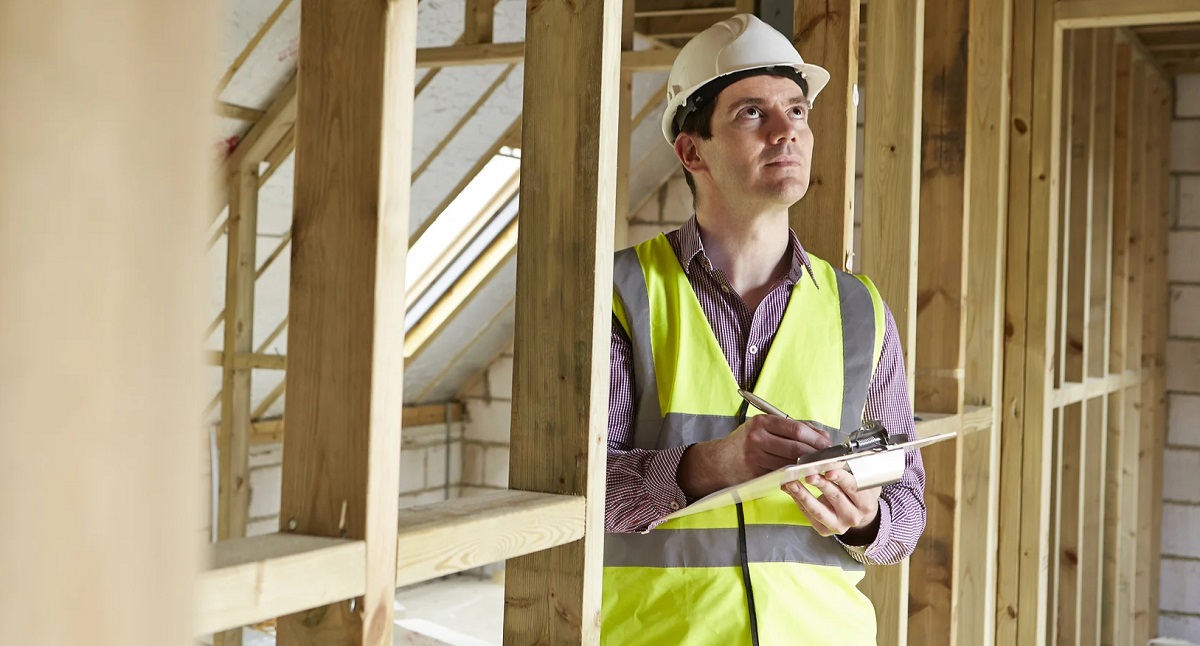

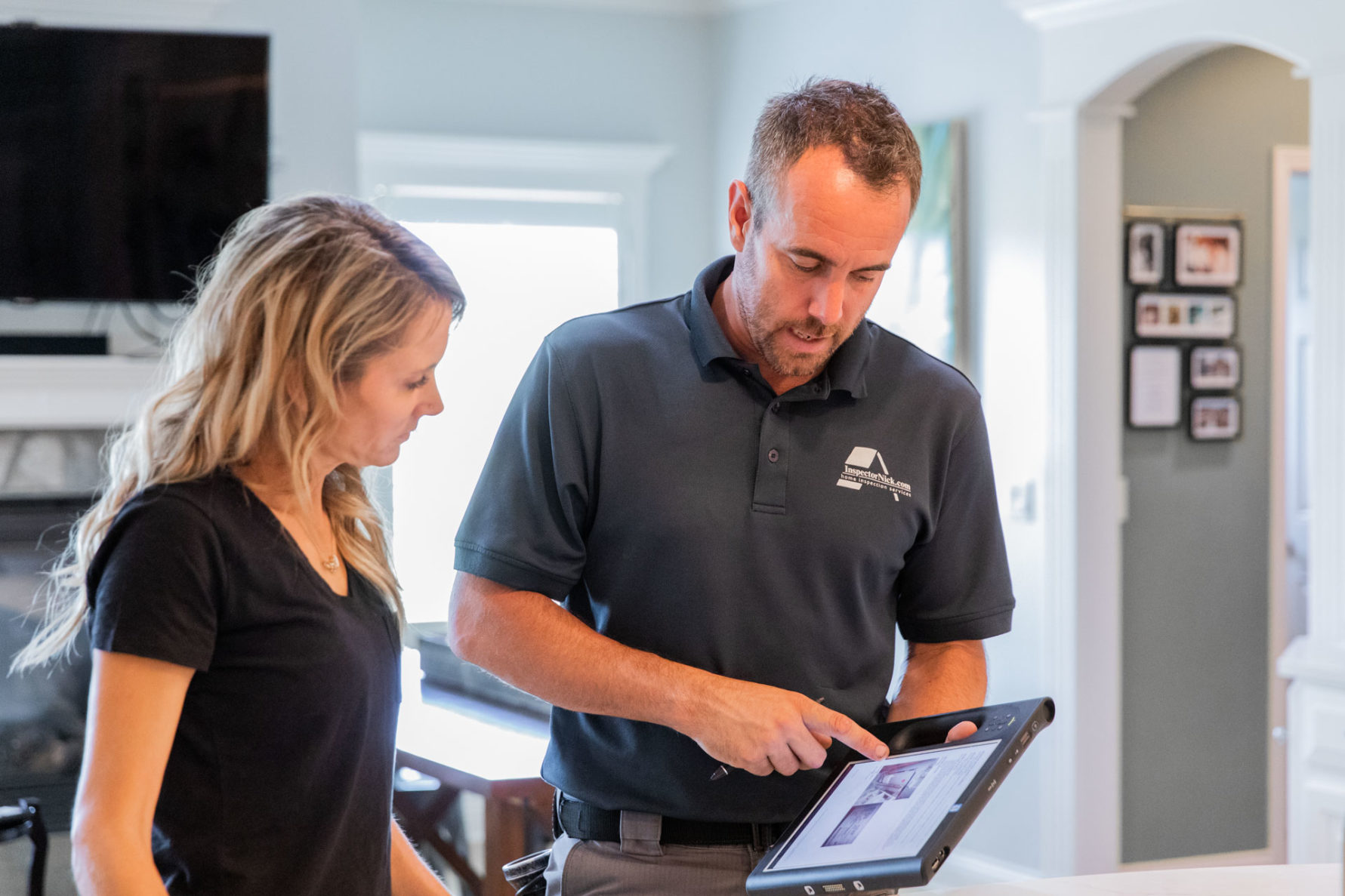


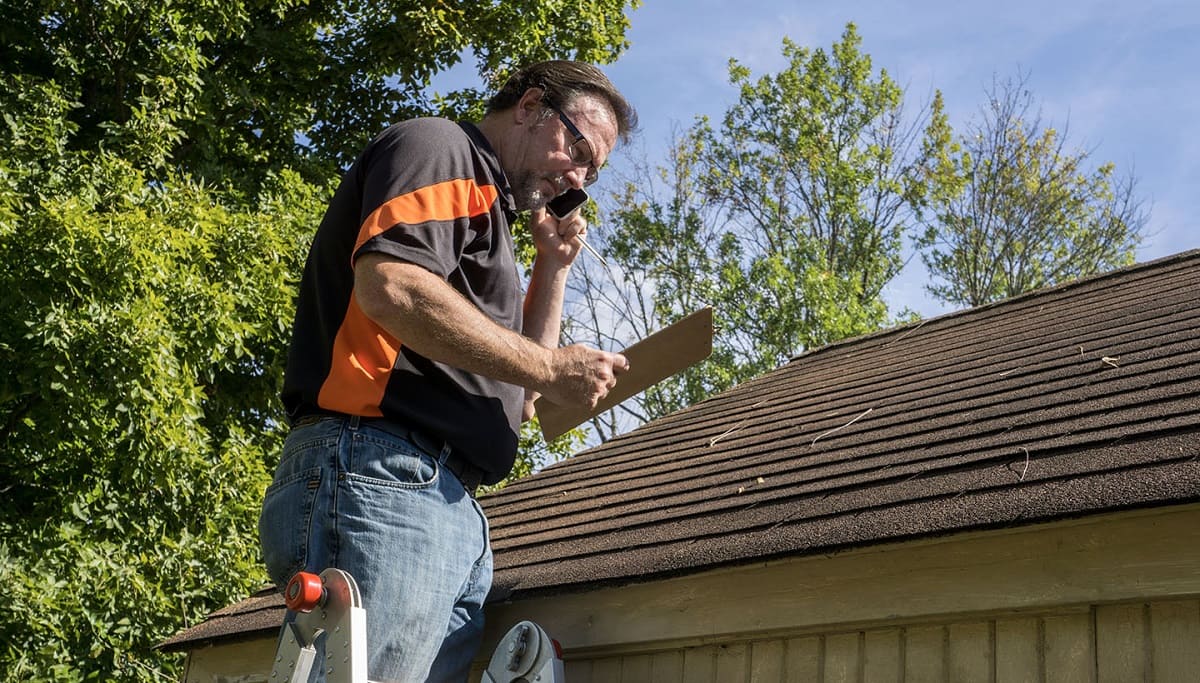
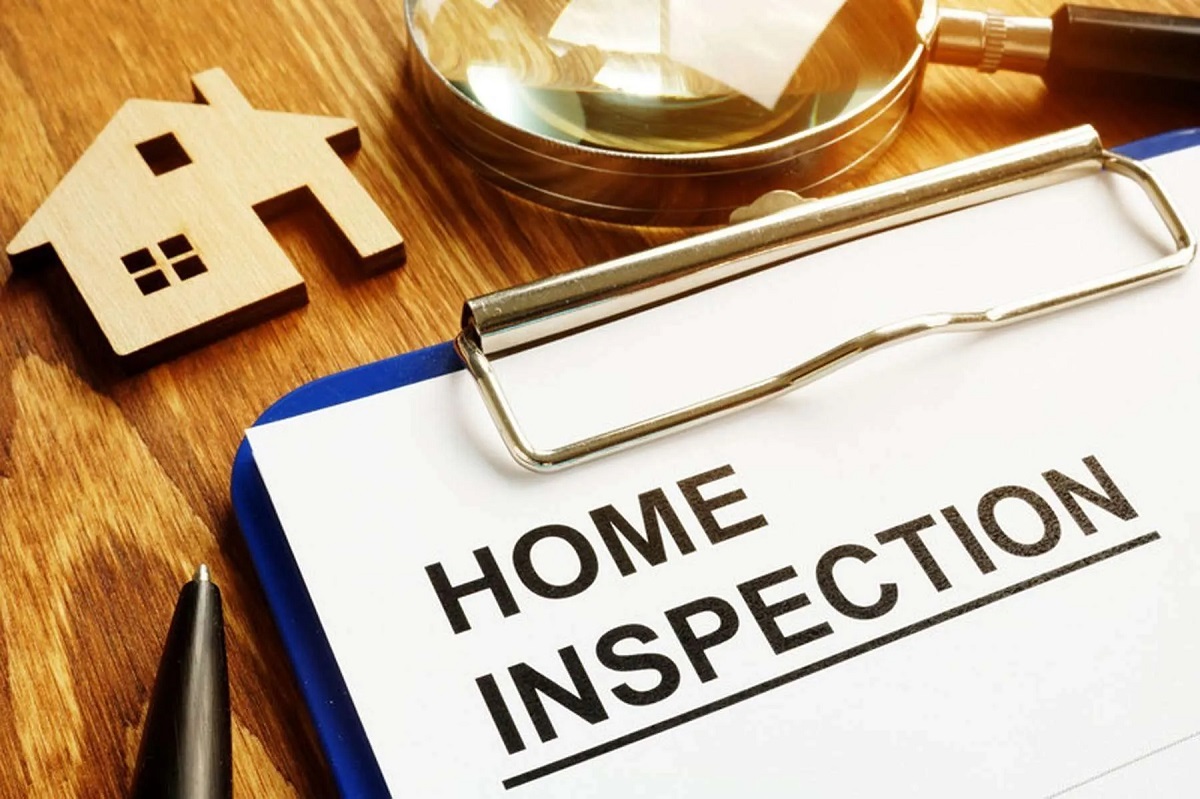

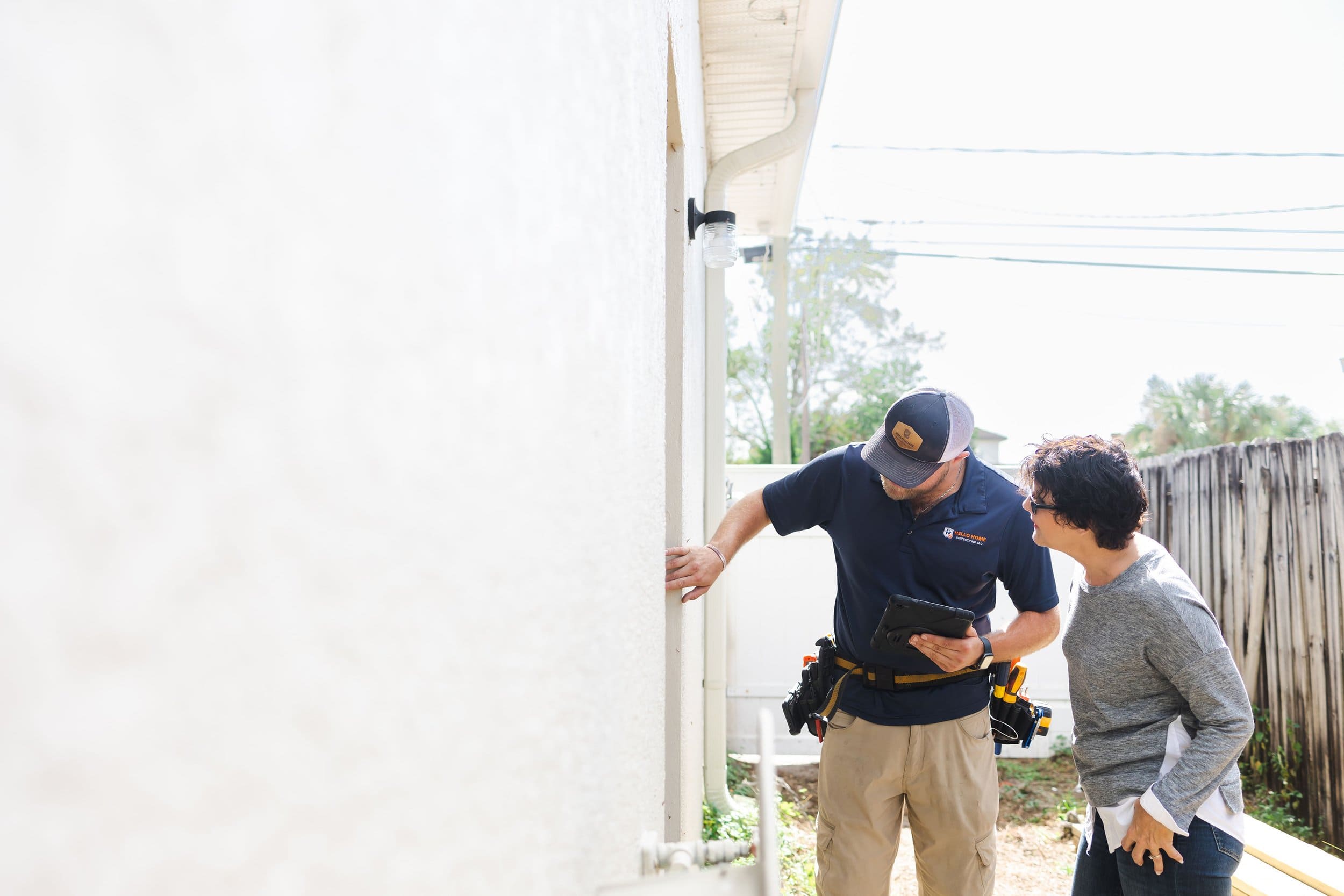

0 thoughts on “What Kind Of Things Scare Buyer Away During Home Inspection”